The Difference Between Replica and Authentic Soccer Jerseys
There are 4 key differences between Replica and Authentic jerseys. Here, we’ll examine each.
1. Price: Replica vs Authentic
Here’s what you’re most likely to be interested in – how does each kit affect your wallet? Well…
Replica soccer jerseys always cost less than their authentic counterparts.
This is because they are built with more cost-effective fabric and applications (more on each of those topics later). Replica jerseys are designed for everyday support and casual wear – there is no need for manufacturers to invest the extra money into turning them into high-performance sport devices – and there’s no reason to charge the average supporter for that, either.
Authentic jerseys, on the other hand, are built to assist world class athletes in performing at the highest level. Much more thought and cost goes into the creation of their kits. We’ll look at how exactly that happens in a moment.
2. Applications (Crests, badges, patches sponsors and more): Replica vs Authentic
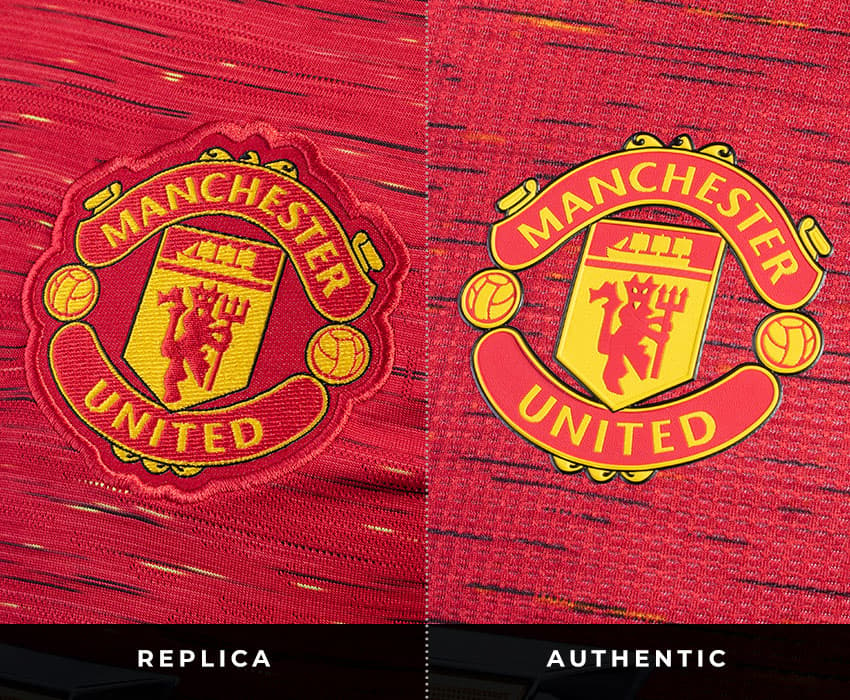
All applications applied to your jersey – be it club crest, sponsor, brand or league/cup badges – differ between Replica and Authentic.
On the Replica, most applications (barring the sponsor) are embroidered or sewn-on, meaning they have a thread-like feel and are durable, able to withstand extensive wear and numerous wash cycles.
On the Authentic, applications are heat-pressed, meaning they have a smooth, synthetic feel and must be handled with care when washed. Badges like these create a premium aesthetic, as they are often raised and textured, sometimes heavier than their Replica counterparts for clubs who have a larger crest, like Manchester United.
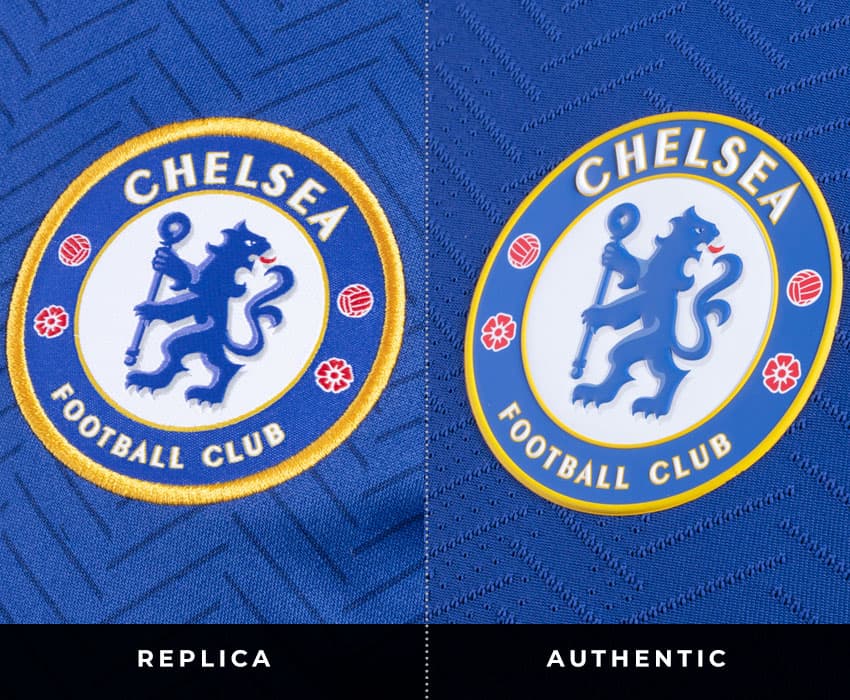
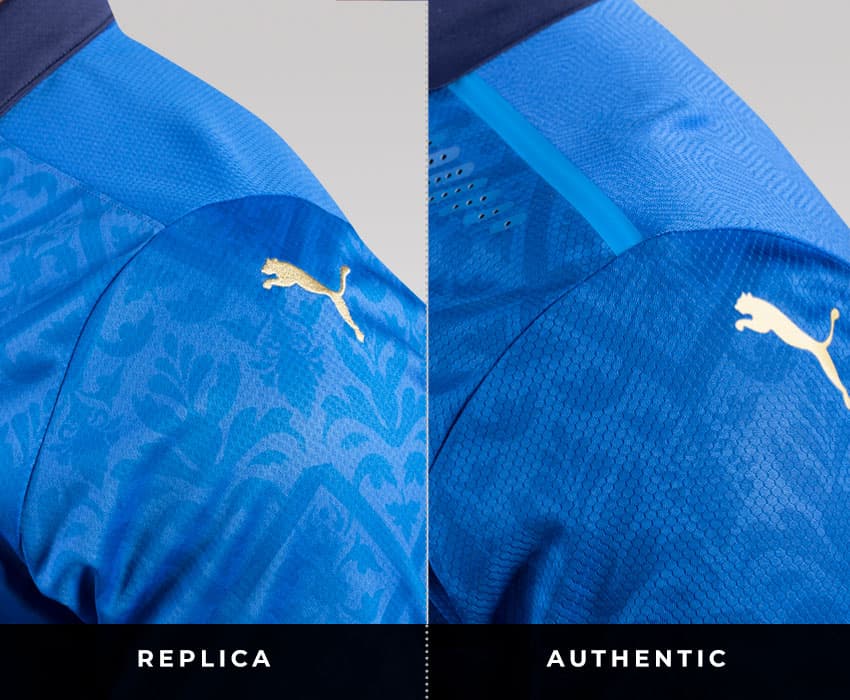
The differences in crests are plain to see, but note the PUMA logo application on the shoulder of the Italy jersey (bottom). Differences in applications don't only apply to club crests.
3. Fit: Replica vs Authentic
Probably the most important and notable distinction between Replica and Authentic soccer jerseys is the way they fit.
When it comes to fit, just keep this in mind: Replica kits are built like t-shirts or polos, while Authentics are tighter, slim and form-fitting. This means there will be visible differences in the tightness of the shirts at the waist, hips and arms.
Authentic jerseys wear a bit tighter – on the pitch, this protects you from the opposition grabbing you and pulling you back by your jersey. There’s also an argument to be made for aerodynamics and reduced flapping when performing quick turns and pirouettes.
If you don’t like the slim fit, but still would like to wear an Authentic jersey, we recommend you purchase one size up from your typical shirt size. So, if you wear a medium in your everyday attire, you may consider ordering a large Authentic kit.
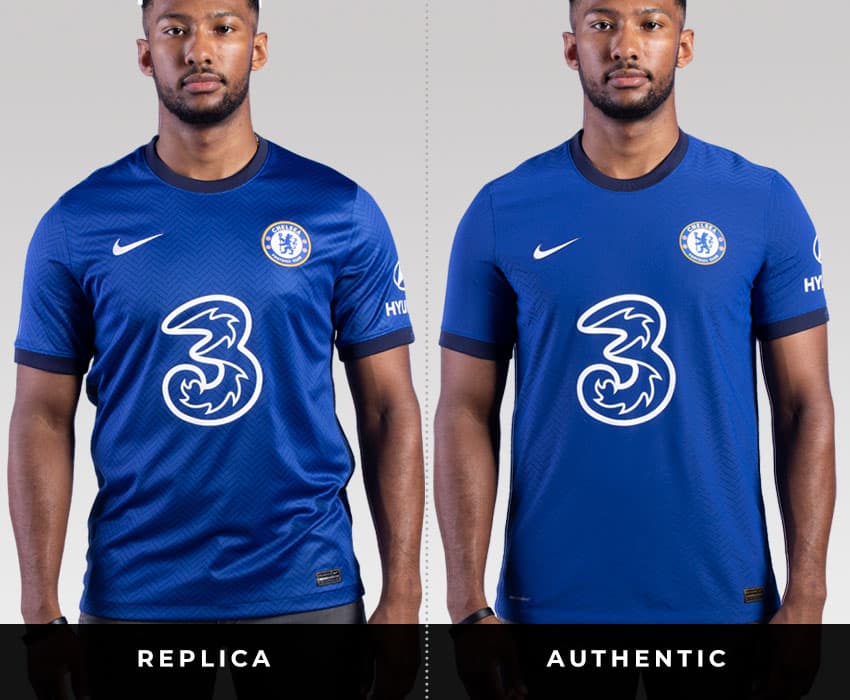
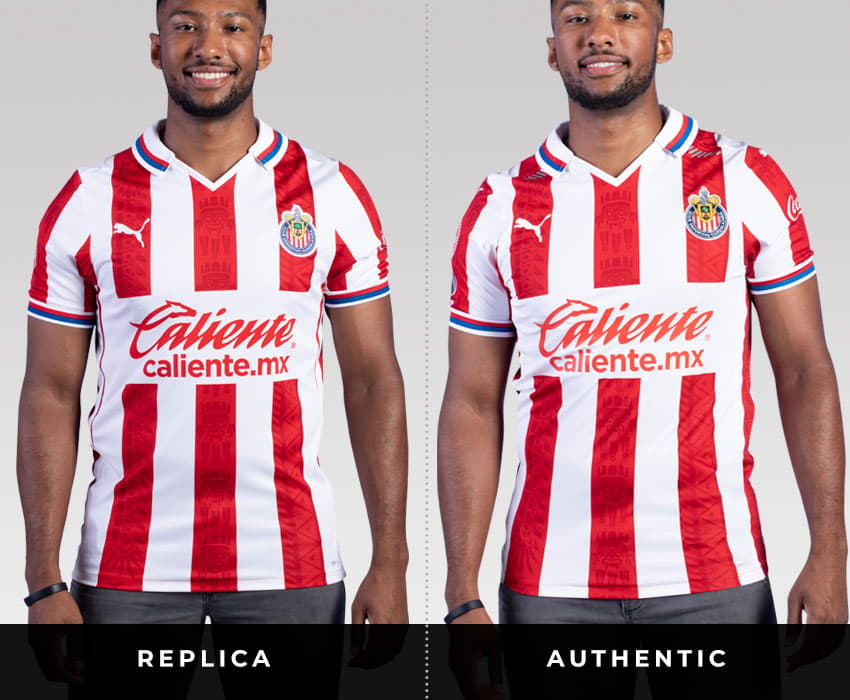
Authentic jerseys fit more snug in just about all areas – chest, waist, torso, shoulders.
4. Material: Replica vs Authentic
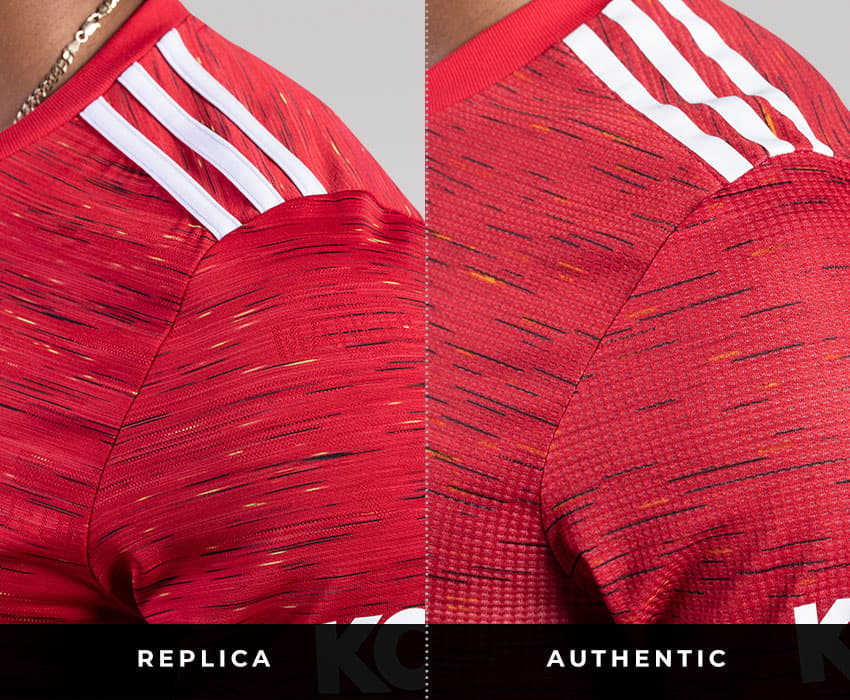
Now we get technical. Replicas and Authentics are usually built with slightly different fabric technologies that vary by brand. They all have unique names and descriptions but can best be summed up as such:
• Replica jerseys make use of conventional, affordable fabric technology designed to keep you cool and comfortable. This material is typical fabric weight.
• Authentic jerseys make use of high-performance, sweat-wicking fabric. They are often laser-cut, carefully paneled and built to increase airflow and regulate body temperature. This material is ultra-lightweight.
On Replica Jerseys, you’ll find the following fabric technology:
• Adidas AeroReadyTechnology – lightweight and built for warm temperatures, synthetic fibers push sweat from the body to the fabric’s outer layer, keeping you dry and comfortable
• Nike Dri-FIT Technology – a high-performance, microfiber polyester fabric that wicks sweat away from the body and allows for increased airflow
• PUMA dryCELL Technology – PUMA’s sweat-wicking fabric that keeps you dry and comfortable
Authentic Jerseys make use of more quality tech:
• Adidas HeatReady Technology – premium fabric technology engineered to offer cooling and breathability in areas where athletes need it most, moving sweat and heat away from the body quickly
• VaporKnit Technology – premium technology combining lightweight cooling, reduced cling and precision fit while wicking sweat from the body and drying quickly
• PUMA Ultraweave – the lightest ever jersey fabric technology, optimized for performance
New Balance has one standard fabric technology across both jersey types:
• NB Dry Technology – New Balance’s sweat-wicking fabric that keeps you dry and comfortable
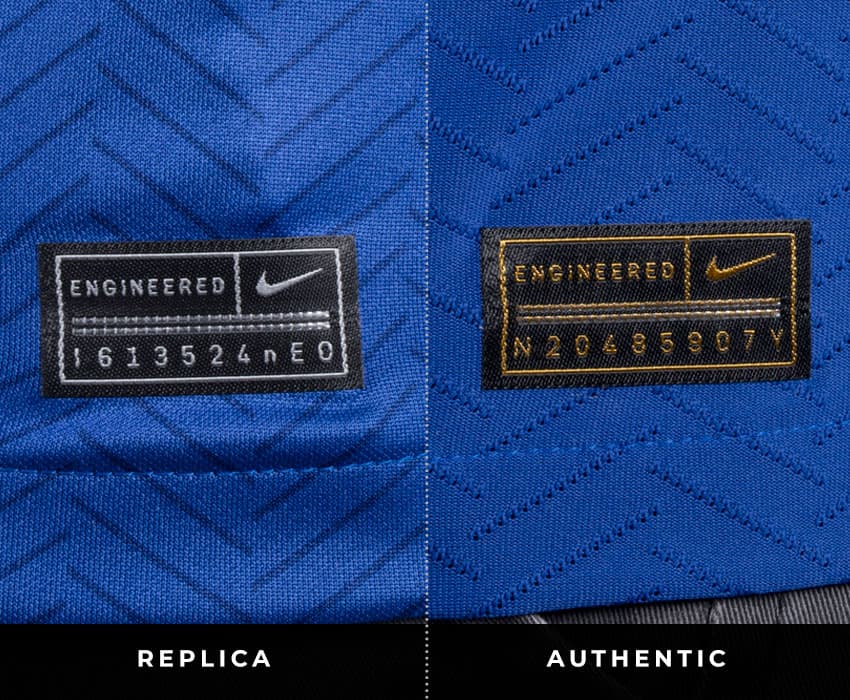
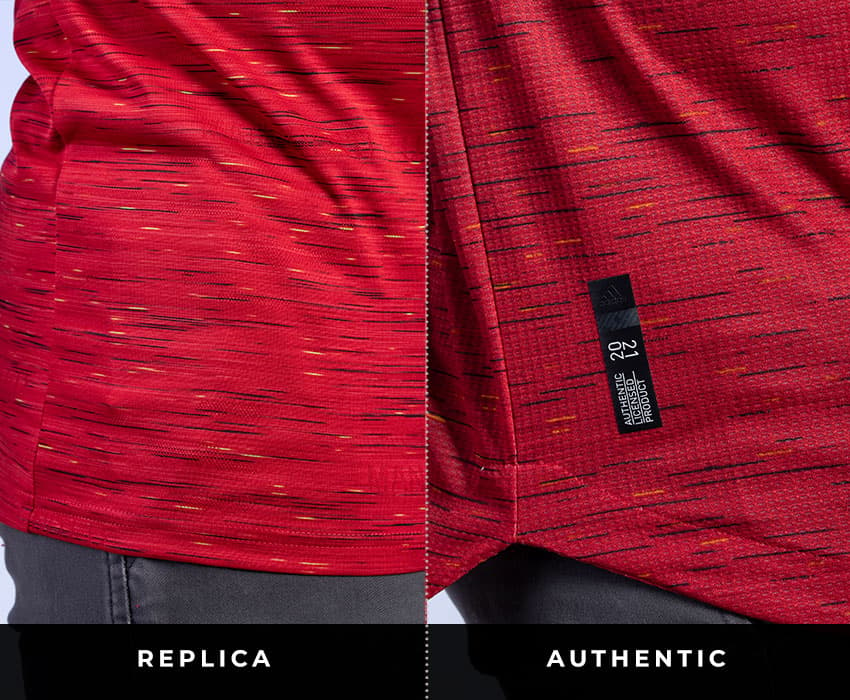
The engineering patch differences are clear, but pay special attention to the fabric differences here, as well. Finally, adidas jerseys usually include a dropped hem on the Authentics, while Replicas are straight.
The last important thing to note with jersey material is weight. As noted above, the Replica jersey is heavier – this doesn’t mean you’ll be wearing an anchor over your shoulders, it simply means the top will feel like a normal t-shirt. The Authentic, on the other hand, may have you feeling lighter, springier and all around like you could beat Kylian Mbappe in a foot race. You can’t, but you get the point.